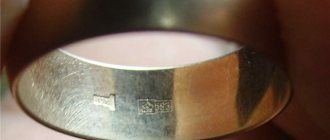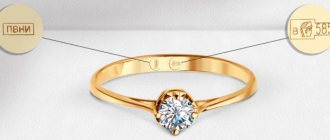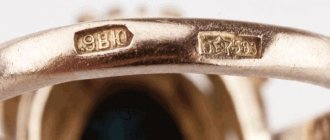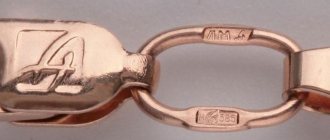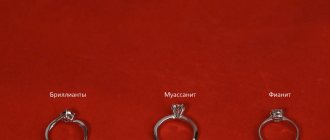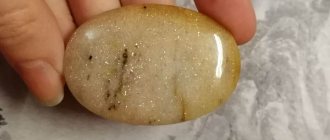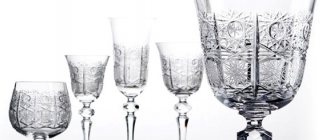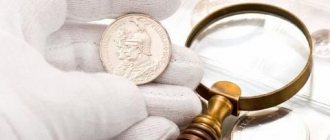There are words used in different meanings and situations. They are called polysemantic. There are terms that extend one concept to different industries and spheres of life. Take, for example, the word “stigma.” This concept is found in the literature, it is used in animal husbandry and jewelry. There are other areas where you can hear this word. What is a stigma, how to interpret and understand it? Let's figure it out.
In Dahl's dictionary
Wed a sign put on objects, a mark, a seal; on horseback, brand. The stamp on the linen means the account, the name of the owner, the emblem of the treasury. The mark on the silver shows its kindness, the year, the name of the master. Customs stamp on goods cleared by duty. | A brand is also a tool used for branding. The master's mark will tell. It's crooked and askew; you can't fix it with a brand. He bears the mark of dishonor, disgraced, disgraced. Brand something, someone, impose a stigma. -sya, to be branded. Branding cf. valid by value verb Brander, brander h. who brands.
Second semantic series
Analyzing what the mark means, it is impossible not to recall the famous novel “The Three Musketeers”. There is a scene that reveals the essence of the concept being studied. On the beauty's shoulder, the count discovered the mark of the city of Lille. This seal has a different meaning. It used to be used as punishment. The mark was placed on the criminal so that anyone could understand the essence of this unscrupulous person. It was considered a great shame to be caught in the act of a crime. Those who broke the law were punished. But unlike the current generally accepted rules, they did not forgive. A person had to pay for what he had done until the end of his days. This is where the expression “branded with shame” comes from. It means moral responsibility for a mistake, which cannot be removed either by good deeds or by time.
In Vasmer Max's dictionary
The mark is also glued, arkhang. (Under.); brand, ukr. stamp, glue, blr. brand, glue. Borrowing from it. *kleim, other - English. clám, English слоам, Middle-German-German klēm “glue, cement mortar, plaster”, Middle-German, Old-German. kleimen “to lubricate, smear” (see glue); see Bernecker 1, 511. Not from ancient history. kleima (contrary to Matzenauer 205; Mi. EW 119; see Törnqvist 10; Mikkola, Berühr. 1, 75), and also not from the modern-century. Kleinod “treasure, jewel” (contrary to Mikkola, АВ 101). •• (Ternquist (“Scando-Slavica”, I, 1954, p. 26) explains the Old Russian glue “pattern on the bottom of the vessel”, “stamp, seal on a silver ingot” from Middle German. kleinôe, kleinôde. – T.)
Types of stamps
The shape of the imprint depends on the type of precious metal. On gold jewelry the mark has the shape of a spatula, on silver jewelry it is an oval cut off on the sides, and on platinum jewelry it is an elongated octagon. The print looks different in each country. Let me remind you that all products sold in the Russian Federation are subject to hallmarking at the local Assay Office. This means that I will talk about the types of Russian stamps.
Currently, the print depicts the profile of a girl in a kokoshnik. A similar design was on the stamps of the Russian Empire at the end of the 19th and beginning of the 20th centuries. Until 1896, the design looked like a “tee” in the form of the intersection of the hallmark numbers, year of manufacture, coat of arms, and letters. Soviet stamps depicted the head of a worker with a hammer (since 1927), a five-pointed star with a hammer and sickle (since 1958).
In the dictionary D.N. Ushakova
STAMP, brands, pl. stamps, cf. 1. A seal, a sign affixed to goods to indicate origin, ownership or for registration. Factory mark. Ham with a brand. 2. A sign or brand burned into the skin of an animal. 3. In ancient times, in despotic states - a sign on the body of a criminal, usually in the form of letters (·ist.). 4. A weapon used for branding (special). 5. transfer, what. A clear, noticeable trace of something (book · outdated). The stigma of misfortune. The stigma of illness. | An imprint, a reflection of something disgraceful, dishonorable (·rhetor.). The stigma of shame. Wash away the stigma. The stigma of contempt. The mark of dishonor.
Sign or object?
The term “stigma” did not arise today, or even yesterday. It was first used by ancient slave traders and cattle breeders, for whom the mark was a kind of sign of the quality and belonging of an animal or slave to a specific owner.
Brand on an animal
The ancient world was vast and densely populated. It was easy for a person who was captured to hide in the camp of his enemies and flee to his homeland. It was impossible to track the movements of captive slaves. To protect themselves, and at the same time to show their superiority over defeated enemies, the practice of branding was introduced.
A special mark containing letters or a drawing was applied to the human body using a special tool, allowing him to be identified as a slave. It was this mark that was called the brand. Wearing it was shameful, since it equated a person with animals, which were also marked with similar marks.
Over time, the mark appeared not only on the body of slaves, but also on criminals and adulterers. In the latter cases, the location of the mark depended on the crime committed. So, if a slave usually had a mark in the shoulder area, then guilty people were marked on the face and forehead. Each mark was unique, so the escaped person was easy to find.
Branding people in the modern world is illegal, because the brand can only be found on animals or objects. As before, the presence of a mark allows one to judge whether an object or animal belongs to a specific person or manufacturer. Most often, a stamp can be found on jewelry - this is the so-called hallmark or quality mark.
Branding tool
general information
Today there are a huge number of different ways to search for missing animals, but the most common is the search for a tattoo. However, before we talk about how to find a dog’s owner in Moscow using a brand, let’s first understand the main points of this procedure
When applying an identifying tattoo to an animal, it is very important to adhere to one rule: it should be on the inside of the ear or on the stomach in the groin area. The procedure is performed by a qualified veterinarian
Nowadays, almost any veterinary clinic has such a specialist and all the necessary equipment.
Information about the operation and the animal is recorded in a special journal. All individuals from the litter must be branded, otherwise the breeder will not receive a document stating that the puppies have passed the examination. There is a special database of dog brands, which stores numbers and all data about the animals: birth information, nickname and coat color.
Pedigree of the dog
As a rule, all the data contained in the brand is reflected in the documents of the purebred puppy, in particular: in the metrics and pedigree. Let's talk about them in more detail.
- The metric is the first document in which all information about the puppy is entered: name, breed, brand code, date of birth, information about parents, club and owner. It is important to note that a metric is only a temporary document. At 15 months of age, she is re-registered as a pedigree.
- A pedigree is a document indicating the origin of a pet. Any pedigree contains a complete list of data about the dog, compiled in accordance with the RKF samples.
What documents contain stamp numbers?
- Brand numbers are included in puppy cards, pedigrees and all breeding documentation.
- The specialist who brands the litter puts his signature on the litter card, which confirms that he actually branded the number of puppies indicated in the litter card, according to their gender and color.
- The litter inspection report is signed by the breeder and the inspector only if all puppies have been branded.
- Each club keeps records, has a computer database and a stud book.
Testing systems
The most popular are metric and carat. I will talk about them and other existing sample measurement systems below. Their correspondence table looks like this:
| Metric | Carat | Zolotnikovaya | Lotovaya |
| 375 | 9 | 36 | 6 |
| 500 | 12 | 48 | 8 |
| 583, 585 | 14 | 56 | 9 |
| 750 | 18 | 72 | 12 |
| 1000 | 24 | 96 | 16 |
Carat
Used in the USA and European countries. The karat designation shows how many parts of pure gold are in 24 parts of the alloy. To convert a metric value to a carat value, you need to multiply it by 0.024.
Metric
The most popular system. Used in most countries of the world, including Russia since 1927. Shows how much gold is contained in 1000 units of the alloy.
Zolotnikovaya
Branding using the spool system was used in the Russian Empire, then in the Soviet Union until 1927. It is not currently used. The measurement was based on a pound consisting of 96 spools. Accordingly, the spool test shows how many units of gold contain 96 units of the alloy.
Lotovaya
This testing system is also from the past. It was used in the Middle Ages by Western European peoples - Celts, Germans, Scandinavians. Previously, the mass of the precious metal was calculated in marks, consisting of 16 lots. This test shows how many lots of gold are in one brand of alloy.
Types of markers and application techniques
Alabai with ears (undocked): when to crop the ears and tail of puppies
Before branding puppies, it is worth deciding on the device for applying it. There are two ways - using a tattoo machine and branding tongs. Both options have positive and negative properties.
Mechanical forceps resemble scissors in appearance. A set of letters and numbers, which are equipped with needles, is purchased separately. They are used to apply a tattoo. The advantage of this method is that branding occurs with one press of the tongs. It's quite quick and painless. Next, paint penetrates into the punctures.
The tattoo machine comes in three varieties:
- rotary kleimator;
- induction machine;
- pen.
The most popular option is the rotary claymator. It is a small machine that fits in the palm of your hand and makes virtually no sounds. This minimizes the risk of scaring your pet. Suitable for both large breeds of dogs (German Shepherd, Labrador) and small ones (Yorkie, Chihuahua, Spitz).
The induction machine is less popular, but it also has an undeniable advantage - the code is clearly visible for a long period, which avoids repeated branding.
The branding pen looks like a writing pen, it is easy to use, silent, lightweight, and suitable for applying a code to small dogs.
Most popular samples
Most jewelry is marked with the following hallmarks: 375, 500, 585, 750. 375 gold is considered low-grade. This product usually has a yellow or reddish tint and fades over time.
The middle group (500 and 585 samples) is the most popular. This ratio of precious metal and alloy in the alloy makes the item durable and durable without losing its external shine.
Jewelry of 750 standard is considered high quality. The alloy has a bright yellow color. Even in white gold, the golden yellow is clearly visible. The 750 alloy alloy usually contains other precious impurities - silver, palladium, platinum.
958 gold is rare. Such jewelry is soft and easy to deform. For minting coins, 900 standard is usually used.
What does it mean if a puppy does not have a brand?
It may be that the puppy does not have a brand because it is replaced by a chip. The veterinarian can tell you about its presence or absence after examination. It is better not to put off going to the veterinarian. At the clinic you can also find out the breed and age of the dog, as well as find out about its health status.
If you purchased a purebred puppy from a breeder, but the pet did not have a brand, this is a reason to think about it and check all the documents. The first thing you need to do is check the details of the puppy card with registered codes in the Russian Canine Database by phone or by visiting the organization in person.
The absence of a brand prohibits the dog from taking part in shows. And if there is no mark or chip, and the dog gets lost, then finding the dog or its owners will become a very difficult task.
Links[edit]
Footnotes [edit]
- Benson, Paul L.; Gilmore, Robert S. (November 15, 2004). Non-destructive scanning of erased marks and engravings from metal objects of art using scanning acoustic microscopy (Report). Nelson-Atkins Museum of Art. Natchitoches, LA: National Center for Conservation Technology and Learning. Cited by: Dodd, Erica Cruickshank (1961). Byzantine silver stamps
.
Dumbarton Oaks Research. 7
.
JPC Kent (stepped sacrum tour). Washington: Dumbarton Oaks Research Library and Collection. pp. 23–35. OCLC 1705103. Compare
: Understudy, Anne-Marie (27 November 2008).
"Edelmetalle". Historisches Lexikon der Schweiz
(in German). - "Gallica -". visualiseur.bnf.fr
. - "Stigma". Dictionary.com
. Retrieved October 2, 2022. - "Online Dictionary of Etymology". etymonline.com. Retrieved December 11, 2011.
- ^ ab Zaffalon, Pierre-Léonard (2018-04-01). "Historical overview of the Swiss Precious Metals Control Act, focusing on platinum group metals". Johnson Matthey Technology Review
.
62
(3):263–270. DOI: 10.1595/205651318×696701. - Babylon, Anthony (1916). Histoire corporative de l'horlogerie, de l'orfèvrerie et des industries, applications
.
Mémoires et Documents publiés par la Société d'Histoire et d'Archéologie de Genève (in French). 33
.
Geneva: A. Jullien, George & Co., p. 4. OCLC 2235476. Koontz, George F. (April 1917). "Proven Work: A Corporate History of Watchmaking, Art and Industry, Applications by Anthony Babel". American Historical Review
.
22
(3):631–633. DOI: 10.2307/1842663. JSTOR 1842663. - Flocco, Louis S. (December 2005). "Swiss Hallmarks on Gold Watch Cases Explained" (PDF). NAWCC Bulletin
.
National Clock and Clock Collectors Association, Inc. 47
(359): 686–699.
ISSN 1527-1609. See also: Flocco; Strasser (summer 2007). "Schweizer Punzen auf Uhrgehäusen in gold." Chronometerophilia Bulletin
(in German). La Chaux-de-Fonds: Chronométrophilia (Swiss Association for the History of Timekeeping) (61): 61–90. - ↑
Swiss Customs, archived April 9, 2007, at the Wayback Machine. - Pickford, Ian (1991). Jackson's marks
. Antiques Collectors Club. clause 12. ISBN 1-85149-128-7. - Pickford, Ian (1991). Jackson's marks
. Antiques Collectors Club. paragraph 14. ISBN 1-85149-128-7. - "Background to the Branding Convention". Branding Convention
. PIC/S. November 20, 2012 - “Which karat gold should I choose?” . Astratelli
. May 11, 2014. - "Convention and other legal marks". Assay office of a jewelry company
. Jewelers company. Retrieved December 31, 2016. - "Hallmarks of Great Britain". Assay office of a jewelry company
. Jewelers company. Retrieved December 31, 2016. - Organ, R. M. (2010). "Palladium labeling in the UK". Review of Platinum Metals
.
54
(1):51–52. DOI: 10.1595/003214010X482375. - "Swiss hallmarks". Swiss hallmarks
. Retrieved January 8, 2022. - "941.31 Loi fédérale du 20 juin 1933 sur le contrôle du commerce des métaux précieux et des ouvrages en métaux précieux (Loi sur le contrôle des métaux précieux, LCMP)". Le Conseil federal
(in French). January 1, 2011
Van Cleef&Arpels
The history of the Van Cleef & Arpels jewelry house usually begins not with the official date - the opening of the boutique at 22 Place Vendôme and the registration of the brand, but with the registration of the marriage between the cutter Alfred Van Cleef and Estelle Arpels, the daughter of a gem dealer. For accuracy and completeness of the picture, we will name both dates: the wedding took place in 1896, and the jewelry store opened 10 years later, that is, in 1906. But there is another year that preserves the memory of an important event for the brand - 1938! It was this year that the Van Cleef & Arpels brand was officially registered - a rhombus with a Vendôme column.
